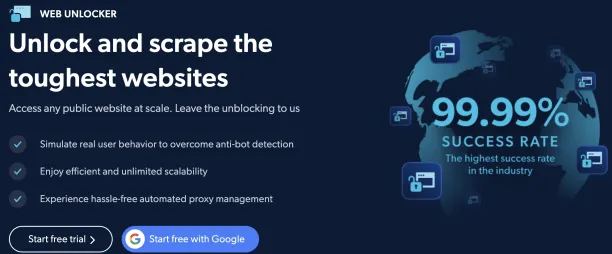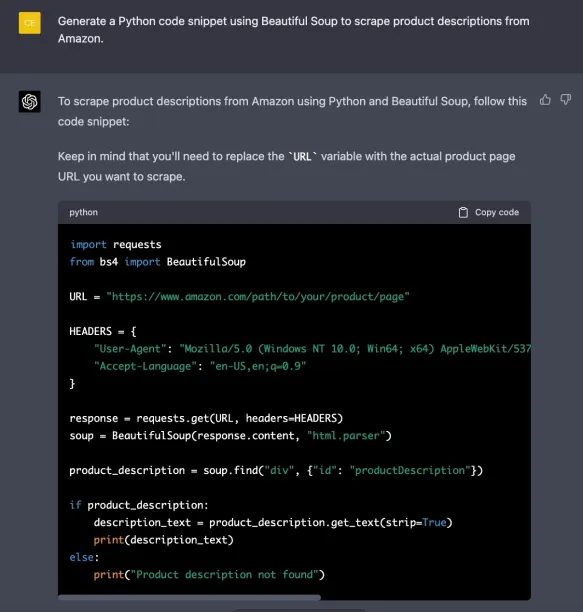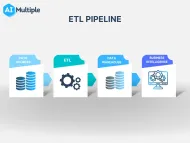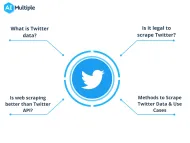AI-Powered Web Scraping in 2024: Best Practices & Use Cases
Web scraping is the process of collecting data from websites using different techniques, including automated, manual and hybrid. Traditional web scraping methods use programming languages, such as Python web scraping libraries to fetch and parse the needed data. However, even slight changes to a website’s design or layout can break a traditional web scraper.
AI-powered web scraping tools handle continually changing website designs and dynamic content, ensuring more resilient data extraction.
This article explains the concept of AI-powered web scraping, as well as the associated techniques and technologies.
What is AI web scraping?
AI web scraping is the process of using artificial intelligence algorithms with traditional web scraping processes to automate and refine data extraction activities. AI-powered web scraping tools are especially beneficial when you:
- Intend to scrape data from dynamic websites (design and structural changes)
- Need to categorize or analyze the scraped data
- Extract data from websites employing anti-bot measures.
Techniques and technologies involved in AI-powered web scraping
AI-powered web scraping approach automatically adapts to website redesigns and extracts data loaded dynamically via JavaScript. It is important to employ these methods with consideration for the website’s terms and ethical considerations.
1. Adaptive scraping
Traditional web scraping methods rely on the specific structure or layout of a web page. When websites update their designs and structures, traditional scrapers can easily break. AI-based data collection methods such as adaptive scraping allow web scraping tools to adjust themselves to changes that are implied by websites, such as designs and structures.
Adaptive scrapers use machine learning and AI to adjust themselves dynamically based on the web page’s structure. They autonomously identify the structure of the target web page by analyzing the document object model (DOM) or by following specific patterns. In order to identify certain patterns or anticipate changes, the tool can be trained using scraped historical data.
For instance, AI models like convolutional neural networks (CNNs) can be used to recognize and analyze visual elements of a web page such as buttons. Typically, traditional data scraping techniques rely on the underlying code of a web page, such as HTML elements, to extract data. Adaptive scraping examines the rendered version of the target website as it appears in a web browser. Visual elements such as buttons, banners or pop-ups disrupt the data extraction process. A CNN can be trained with different visual representations of the pagination buttons to locate and interact with these buttons on a web page.
2. Generating human-like browsing patterns
Most websites employ anti-scraping measures, like CAPTCHAs, to prevent web scrapers from accessing and scraping their content. AI powered web scraping tools can simulate human-like behavior like speed, mouse movements, and click patterns.
Sponsored:
Bright Data’s Web Unlocker enables users to circumvent anti-bot measures such as cookies, CAPTCHAs, and other web tracking techniques during the data collection process. Web Unlocker is a data extraction solution that utilizes machine learning algorithms and proxy servers to handle bot detection systems.

3. Generative AI models
Generative AI can be applied in different stages of data collection process to enhance its adaptability. Pre-trained language models like ChatGPT can help developers generate code for extracting data from websites, provide step-by-step instructions for web scraping in different programming languages. Once you have scraped the desired web data, ChatGPT can be fine-tuned on the scraped data to generate more conversational content.

4. Natural language processing (NLP)
NLP, a subset of ML, enables you to conduct various tasks, including sentiment analysis, content summarization, and entity recognition. It is necessary to derive insights from the scraped data. For instance, if you have extracted a significant amount of product review data, you need to determine the emotional tone behind each word, such as positive, negative, or neutral. Sentiment analysis allows you to classify the extracted data as positive or negative. This helps businesses to address customer concerns and improve their offerings.
Further reading



Comments
Your email address will not be published. All fields are required.